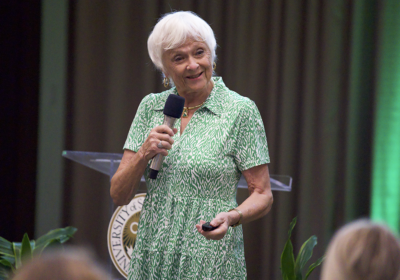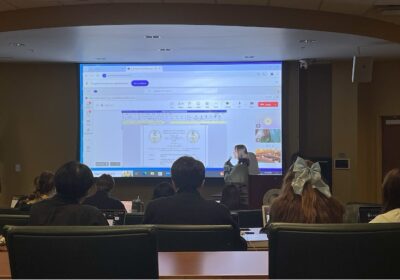USF researchers return from oil spill
A team of USF researchers who explored the massive oil spill in the Gulf of Mexico for nearly two weeks is now analyzing the data they collected to assess the potential negative impact of the spill on wildlife.
Thunderstorms welcomed the group aboard the R/V Weatherbird II (R/V WB II) home Monday as they pulled into port after 12 days at sea.
The research crew, comprised of USF biological oceanographers Ernst Peebles, David Jones, Ralph Kitzmiller, Holly Rolls, Kara Radabaugh, Drew Remsen and scientists from the Florida Fish and Wildlife Research Center, collected data, images and water samples of the potential damage to zooplankton from the disastrous spill.
Drew Remsen, a professor at USF’s College of Marine Science, said the team collected about 60 gigabytes of data.
It was with the aid of a digital imaging device known as the SIPPER that Remsen said the team was able to collect the images that will allow them to analyze the spill’s effects on zooplankton.
“The ocean’s a very dynamic environment,” he said. “It will take us a while to figure out what’s natural and what’s unnatural.”
One unnatural feature the group noticed was the scent of kerosene – a smell that worsened as the week progressed and made some team members feel ill, Remsen said.
Matthew White, the captain of the R/V WB II, said that the smell of the oil on the water wasn’t the only thing that hindered the team’s expedition. The weather and traffic on the water also played a large role.
White, who has captained the R/V WB II for 16 months and has nine years of experience with the Coast Guard, said he had never seen so much boating traffic and coordinating efforts to control it in all his years on the water.
“You see the picture of the oil spill on T.V., and then you get there and see the different thicknesses of oil and how large it is,” White said.
Peebles, the principal land-based investigator, monitored the spread of the oil slick toward the loop current, part of the Gulf Stream that would send the oil past the Keys and up the Atlantic coast, via satellite imaging.
Peebles said observations made by eyewitnesses on scene at the spill, including one made by White, verified that the oil had moved further south and closer to the path of the loop current.
“The loop current moves at just a few miles per hour,” Peebles said. “But it wouldn’t take more than a few days for the oil to reach the Florida Keys.”
To investigate how much oil is in the loop current, 10 USF researchers left Wednesday for a five-day expedition to track the loop current on the research vessel Bellows.
Peebles said that an effort to break up the oil in the water with the use of dispersants has caused the oil to have the same consistency as water, making it more difficult to track via satellite and more likely to get caught in the loop current.
“This is one of those cases in history where you have societal learning,” Peebles said. “Where people change their values and second guess the way they live.”







